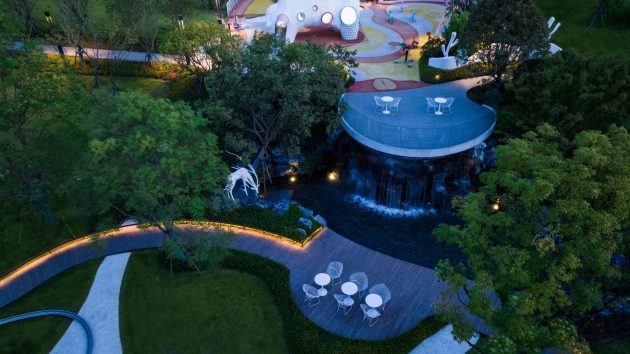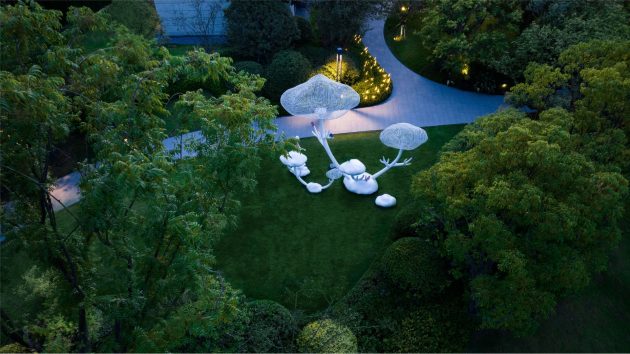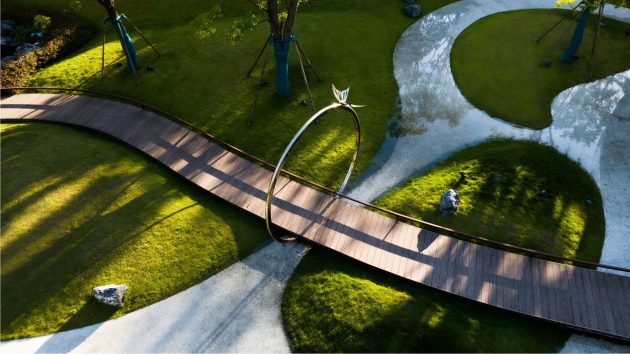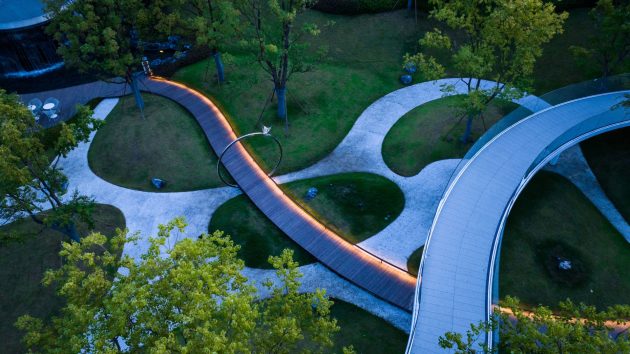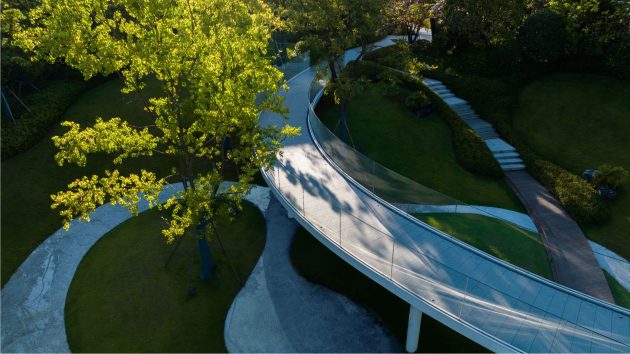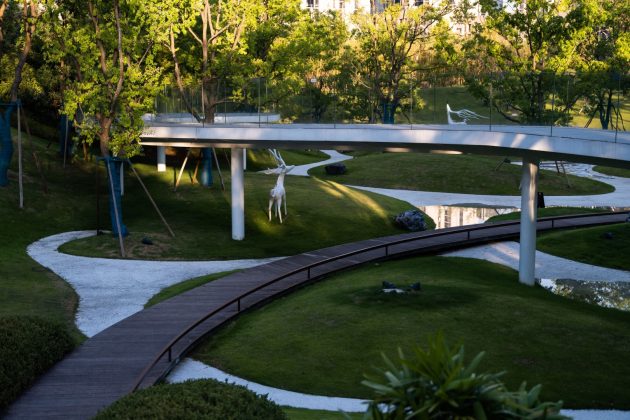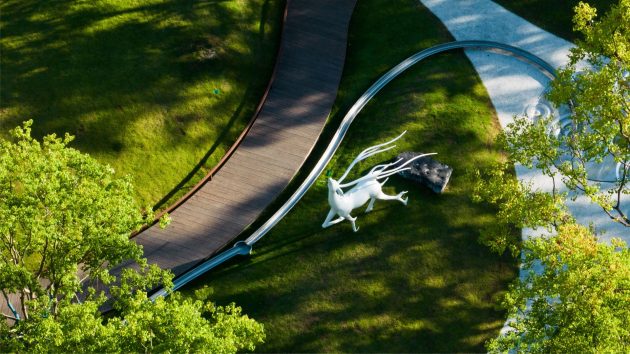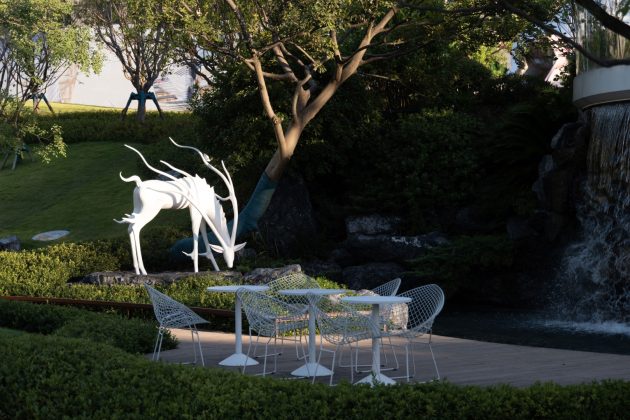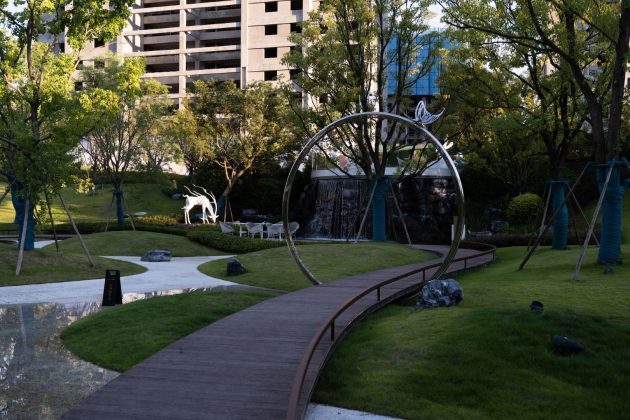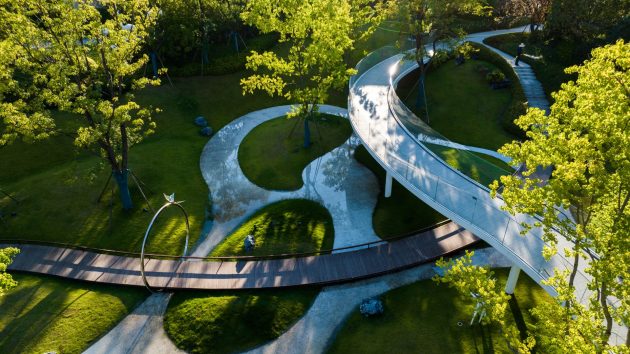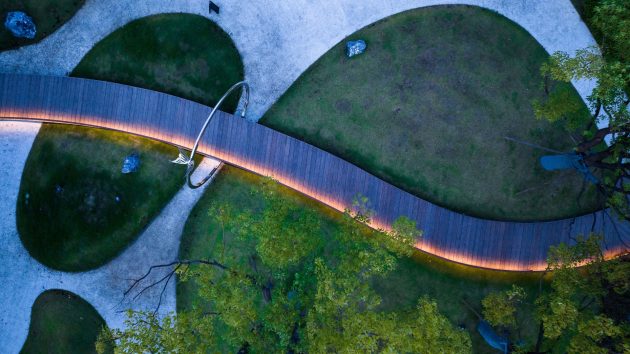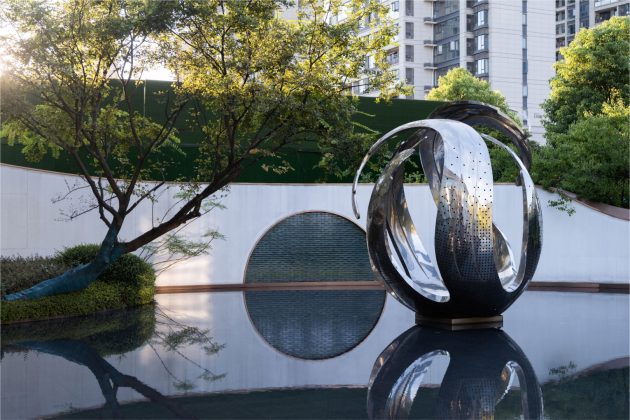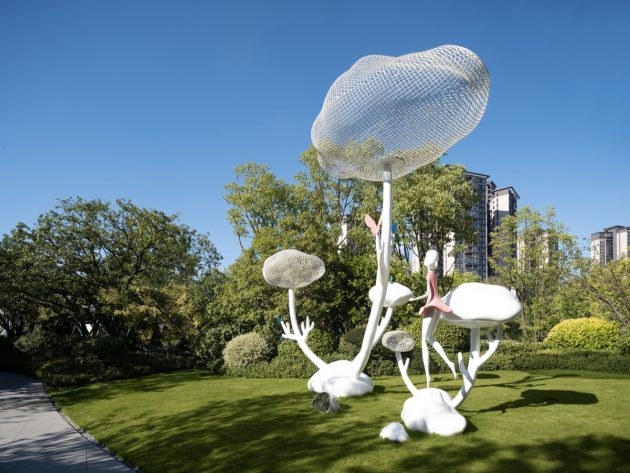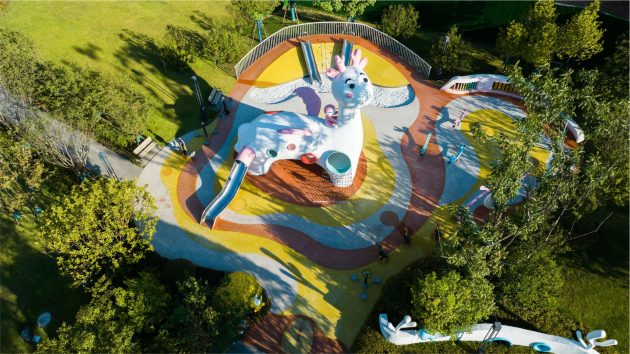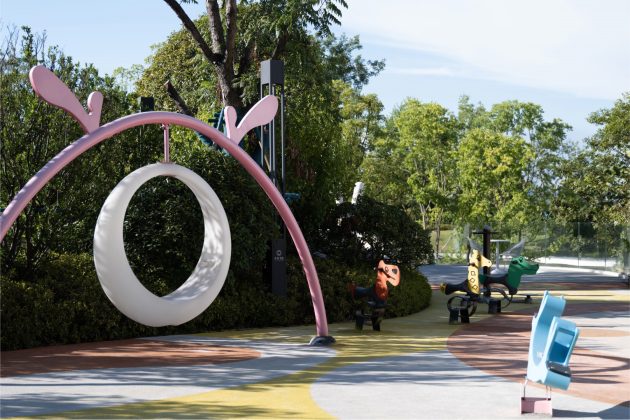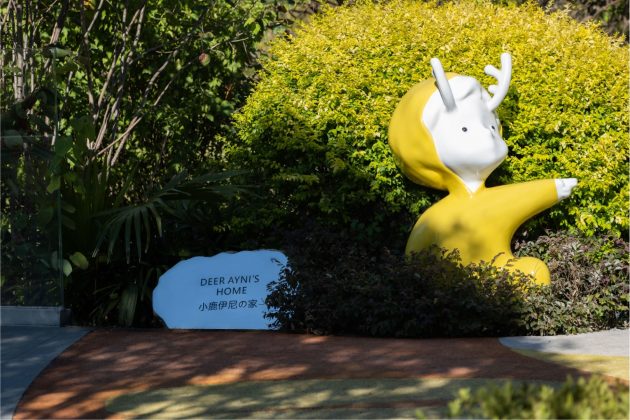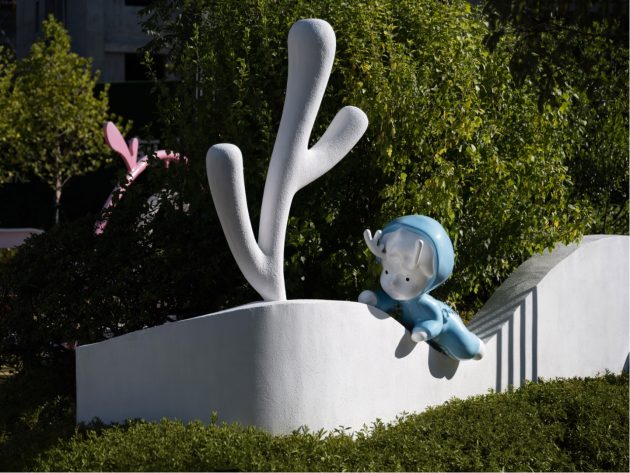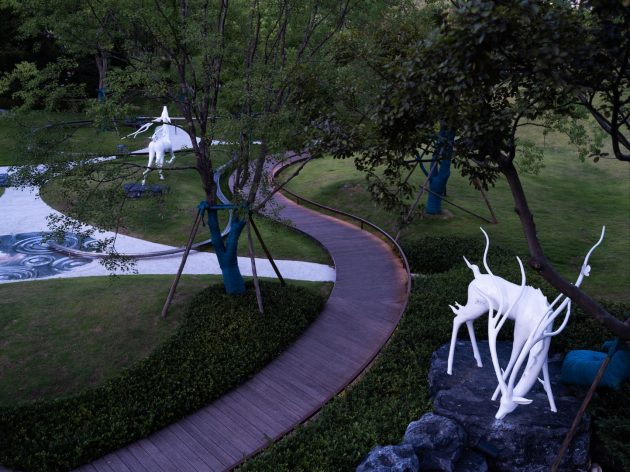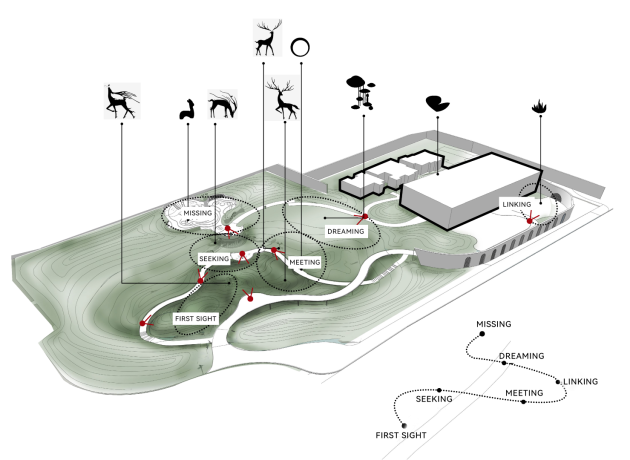Project: Changsha Poly – City Gather
Architects: Dean Design
Location: Yuelu District, Changsha, Hunan Province, China
Area: 107,639 sf
Year: 2021
Photographs by: Chill Shine
Changsha Poly – City Gather by Dean Design
A fascinating forest-themed environment activates a new kind of city park.
Offering a multiplicity of vistas and activities, the design suggests a new kind of relationship with nature for those experiencing these outdoor spaces, ultimately presenting an opportunity for relaxation and self-reflection in the city.
-Dean Design
With the acceleration of urbanization and continued advancement of high-tech lifestyles, the importance of urban parks and landscapes have been given new meaning. One aspect of this transformation has been the necessity to re-think the relationship and integration between people and nature.
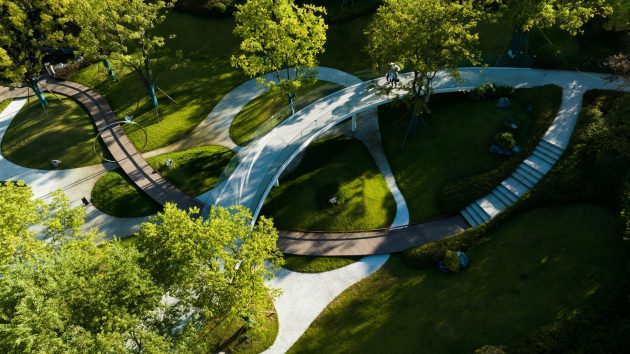
As the first high-end project of the “City Series” that are planned for Changsha, the City Gather Park is situated in the Xiangjiang New District, a strategic planning area of the Belt and Road master plan. Anchored by the burgeoning development in the areas surrounding the city’s center, the project is located in close proximity to various high-profile amenities such as the Tianxin District Commercial Center and the Yuelu Cultural Center. It is accessible via main arteries Tanzhou Avenue and South Xiaoxiang Road, and lies adjacent to the 7,200-acre Yanghu National Wetland Park, creating an opportunity for a new kind of project encompassing green, ecological, and progressive values.
Focusing on the integration of natural ecology and urban life, Dean Design takes the concept of human experience enriched by art, and applies it to the design of all landscape elements in the project by taking the theme of an Urban Forest and applying it to planting arrangements, pathways, outdoor furniture, and sculptures. Drawing on the archetypal imagery of deer in the forest, the languages of contemporary art and landscaping complement one another to create a synthesis of culture and nature for visitors to the park. This unique combination of forest community and activities park creates a memorable urban experience, both tactile and poetic, in a setting close to nature.
“Landscapes represent the integration of aesthetic sensibilities applied to natural scenery and daily life. In this forest-style community park, ecology, vitality, and recreation were the key words behind our conceptual approach. We applied the subtle, fleeting imagery of deer in the forest to begin an enquiry into the relationship between nature and human experience, in order to fully realize the unique potential of the site.”
Plants and trees, light and shadow, sculpted deer and winding paths are interwoven into a series of vivid scenic tableaux. By designing the plantings to correspond with the pathway’s views as it winds through the park, the designers have re-created the experience of visiting a natural wooded environment. The deer sculptures, as the focal point of the scene, bring a sense of vitality and light-heartedness to those walking through the area.
As visitors stroll through the forest, the tranquil sounds of grass in the breeze, babbling streams and cascading waterfalls create a rich sensory experience. Here, the sculpted deer posed amongst the scenery add a touch of aesthetic charm. From the recreation side of the project, listening to the sound of flowing water nearby and looking towards the green forest in the distance responds to urban residents’ inner need for nature, and creates a strong connection with the activities offered within the park.
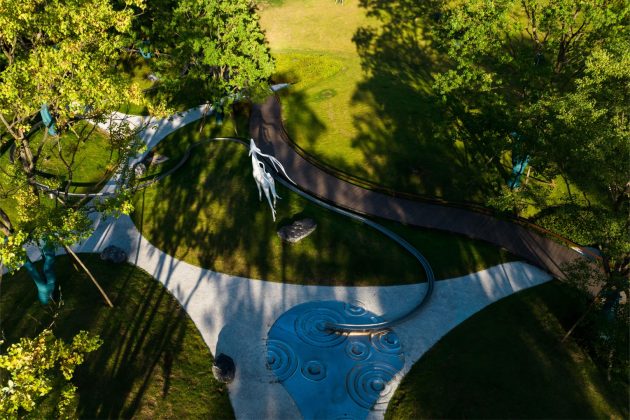
“For us, landscape sculpture is not simply a physical form, but a metaphorical bridge between humanity and nature. By encompassing the associations between ‘art – place – landscape – emotion’, it provides both a conceptual and intuitive link for the public to the project’s underlying meaning: a symbiosis of scenery and emotion.”
Along the winding paths, visitors come across lively installations composed of circular forms within the landscape. The designer has explored the structure, rhythm and artistic aspects of geometry to create a strong contrast with the surrounding natural elements. Every time visitors walk here, they will have the opportunity to discover and enjoy new subtleties in this unique environment.
By incorporating the principles and sensibilities of contemporary art into the park’s abundant natural features, a new kind of design language has been created which addresses not only contextual beauty, but the coexistence of art and nature – and how their relationship may be continuously explored beyond a traditional understanding of what constitutes a landscape.
As visitors walk towards the garden, adjacent to the water feature area, they will pass through the steel ring installation, echoing the pure, minimalist aesthetics of contemporary art. Reflected in the waters of the pond, this landscape with its dream-like atmosphere of the virtual and real evokes poetic feelings and emotions, echoing the experience of living in close proximity to water.
Visitors stopping to look at the shimmering surface of the water may observe the delicate reflections of trees, light, and sculptures fused together. “Here, regardless of the object or form, we aspire to create an engaging environment that reflects not only the world of culture, but the essential connection between humanity and nature through the aesthetics of landscape and design.”
As elements which have a high potential to attract visitors to the park, the cloud mushroom sculptures are an exuberant expression of creativity. Through the introduction of these playful and memorable elements into the project, the atmosphere is transformed by visitors’ lively interactions with them, young and old alike – creating an invitingly active area for the local community.
The children’s playground, hidden amongst the trees, is an area set aside for children’s activities and a place where the local community can enjoy a lively and dynamic ambience. “The planning of children’s playgrounds is closely related to natural ecology, urban environments, and children’s patterns of behavior; it is based on close observation and a practice rooted in dynamic systems, rather than being limited to the static assemblage of play equipment.”
The playground integrates parent-child interaction, play activities, and opportunities for visitors to socialize, with unique playground elements such as the “deer house” slide, and the colorful ground surface, seesaws, and fitness equipment all providing a tactile connection to the park for the local community. In this way, the park’s concepts of “deer by the lake” and “children playing in a forest” are brought to life, supporting visiting children’s well-being and sense of wonder.
With city life comes dwelling in concrete buildings and a detachment from nature. In the Changsha City Gather project, the designers aim to allow urbanites to rediscover and explore nature within the city, by promoting an innovative ecological system combined with a poetic, aesthetically refined environment. Dean Design has created a mythic forest within an urban park where art and nature are gracefully intertwined. In addressing the complexity of a city setting, it has not only created a natural landscape compatible with urban life, but also a vibrant gathering place for public activities – providing a place of friendly interaction between city workers, the local community, and visitors, opening the way towards new possibilities, ideas, and lifestyles.
-Project description and images provided by CURRENT-NEWSWIRE

